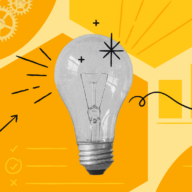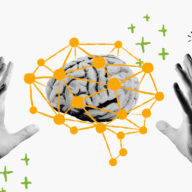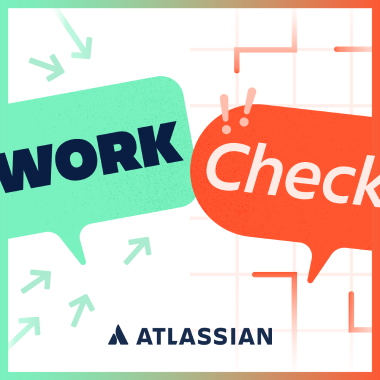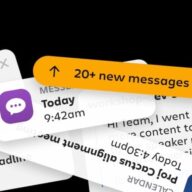Play details
| Prep time | 15 – 30 mins |
| Run time | 20 – 120 mins |
| People | 1 |
| What you’ll need | Preferred AI tool that lets you build an agent (e.g., Rovo) |
5-second summary
- Come up with ideas for AI agents.
- Build your first agent.
- Test and edit your agent
Play resources
About this play
| What is an AI Teammate play? | This play helps you understand the full potential of AI teammates by guiding you in building your first agent, specifically tailored to meet your unique needs and workflows, offering far more efficiency and personalization than a general AI chat. Your agents can serve as: – Creative and technical partners to brainstorm, iterate, and refine ideas. – Assistants to automate routine tasks, freeing up time for more strategic work. – Expert advisors to expand knowledge, enhance decision-making, and ensure your team can innovate and execute efficiently. |
| Why run the AI Teammate Play? | Creating a custom AI agent is like hiring a specialist to join your team who really excels at performing a certain task with a high degree of speed and quality. For example, when you build your own agent, you can tailor it to your unique needs, automating specific tasks and integrating it seamlessly into your workflow. |
| When should you run the AI Teammate Play? | The best teams align on what needs to get done and how the work will happen, and teams that include humans and AI are no different. However, unlike expanding your human team, expanding your AI team doesn’t necessarily mean consulting the rest of your team. You can create AI teammates anytime to suit your needs or collaborate and build with your team. |
| 3 benefits of AI Teammates Play | By treating AI as a teammate and developing specialized agents, you can transition from a simple AI user to a strategic AI collaborator. This shift brings several advantages, including: 1. Improved Return on Investment (ROI): Strategic AI collaborators save more time on a daily basis compared to simple users. 2. Increased Productivity: People who treat AI as a strategic collaborator are more likely to reinvest the time saved to dive more deeply into their work, like learning new skills and generating new ideas. 3. Higher Quality Work: 85% of those who collaborate strategically with AI said their work quality improved over the last month. |
Instructions
1. Come up with ideas for agents (15-30 minutes)
At the end of this week, spend five minutes reflecting on workflows where agents could have been useful. Focus on tasks that are repetitive, time-consuming, and involve text-based outputs, as these are prime candidates for automation. Ask yourself:
- What tasks did you not enjoy that you’d rather outsource to a teammate?
- What tasks took way longer than you thought that you might be able to speed up?
- Looking at your calendar, are there any tasks that are repeated each day/week/month?
Here are some examples of when to build an agent vs. use general AI tools:
- Repetitive tasks (that you can automate): If you’re performing the same task over and over, an AI agent can automate it for you.
Example: Automating data entry into spreadsheets or generating weekly sales reports. - Prompts that you feed AI over and over: When you find yourself repeatedly using similar prompts for specific tasks, an AI agent can handle those with less effort on your part.
Example: Consistently generating marketing content based on specific themes or product categories. - Problems you face every week: For recurring issues, a custom AI agent can handle routine problem-solving or flag challenges that need attention.
Example: Managing customer support tickets or automatically scheduling meetings based on availability. - Nuanced tasks where you want to store specialized knowledge: If a task requires knowledge that needs to be refined or specific expertise, an AI agent can store and apply that knowledge to make better decisions.
Example: An internal knowledge base for legal or financial compliance, where the AI pulls up relevant information based on the current task or question.
Once you have a few things on your list, block off 15 – 90 minutes in your calendar next week to build an agent to address one of these tasks.
Optional: Find an accountability buddy and plan to make a list of use cases together. Message your buddy with your idea for an agent and when you plan to try to build it. Research shows we’re likelier to follow through on intentions if we make an if-then plan for how we’ll do so.
2. Build your agent (15-90 minutes)
Now that you’ve identified a task that’s a prime candidate for turning into an AI agent, it’s time to start building your agent.
- Outline the agent’s role: Define the problem you want your agent to solve Next, determine whether the agent will function as an assistant, a decision-maker, or a data processor. Here are some examples:
- Assistant agent: The agent is meant to communicate with users.
Example: A customer support agent that can understand and respond to user inquiries in natural language, such as “What’s the status of my order?” and “Can you help me with a refund?” by processing text and generating human-like replies. - Decision-making agent: The agent is meant to take action based on inputs.
Example: A sales agent that uses decision trees to qualify leads. If a lead responds with “I’m interested in a subscription plan,” the agent might ask follow-up questions like “Which plan are you interested in?” or “What’s your company size?” to determine the appropriate next steps. - Task automation agent: The agent is meant to automate a defined task.
Example: An email response agent that automatically replies to common inquiries, such as “Thank you for your message, we’ll get back to you soon,” or schedules meetings by pulling available time slots from a calendar and confirming with the user.
- Assistant agent: The agent is meant to communicate with users.
- Choose an AI platform: Choose your preferred AI tool like Rovo or OpenAI’s GPT.
- Choose your approach for building the agent: Decide if you will duplicate an existing agent or build one from scratch. Many AI tools, like Rovo, include instructions for how to build new agents or use premade agents that you can tailor to your specific needs.
- Write instructions for your agent: Whether you’re making a new agent or making a copy of an existing one, you’ll need to give your agent instructions on what to do. Instructions help define the agent’s tasks and guide its behavior, ensuring it responds accurately and efficiently to user requests. Consider the following questions when drafting these instructions:
- What will the agent do? (role)
- What specific goals or knowledge will your agent focus on? (context))
- What specific tasks or jobs will your agent be able to perform? (task)
- What tone and response style should your agent have? (tone/format)
- What constraints should be emphasized or avoided?
Tip: have your agent ask you questions
Tell your agent to ask you questions in the prompt one at a time and wait for a response before proceeding to the next question. That way, it won’t try to perform its job before you’ve provided it with all the necessary context.
- Create conversation starters: Include suggested prompts or questions that help you begin a chat with an agent and guide them on how to interact. Try to use examples that show off the most common things you plan to ask the agent to do as shortcuts. If you leave the field blank, your agent will use generic conversation starters.
- Example: An agent that writes social media content for your brand might have the following conversation starters: “Write a short Instagram post,” “Create 15 hashtags I can use for this post,” “What’s a tagline I can use to get people’s attention on this post?”
- Example: An agent that helps you find subject matter experts might have the following conversation starters: “Who should I talk to about this work?,” “What team is responsible for this work?,” “Has anyone been working on similar subject matter to this page?”
- Provide knowledge to your agent: This refers to the information and resources you give your agent to improve its accuracy and responses. While all agents have generic knowledge, adding specific sources, like Confluence pages, templates, examples of tone, specific expertise, or even Google Drive links, help optimize performance.
update your knowledge sources
Regularly update the knowledge sources linked to your agent to keep it current and accurate.
3. Fine-tune your agent
Once your agent has been created, testing and tweaking are crucial to identify and correct any inconsistencies or errors in its responses. Here are some ways to test and edit your agent:
- Put on a different “hat” and try to “break” your agent. Ask unusual/strange questions and challenge its assumptions.
- Ask a colleague to “break” your agent. Pro tip: Have them make a video, like a Loom recording, of them trying to break the agent so you can see the prompt and response.
- Revise your prompt based on any strange or unexpected responses it gives to you or your colleague.
Keep your original prompts
Copy and paste your original prompt somewhere else (e.g., a Confluence page) so you can revert if your changes do not solve the problem—not all agent builders have version history.
Check out more Plays!





 )
) 





































